#frog science
Explore tagged Tumblr posts
Text
hello tumblr I’m a frog scientist and I heard you like frogs here so I’m here to share frog content if that’s okay
my first contribution is to inform you all that Carl Linnaeus hated frogs. Like, really hated them:
"These foul and loathsome animals are abhorrent because of their cold body, pale color, cartilaginous skeleton, filthy skin, fierce aspect, calculating eye, offensive smell, harsh voice, squalid habitation, and terrible venom; and so their Creator has not exerted his powers to make more of them." - Carl Linnaeus, Systema Naturae 1758 (Translated from Latin)
idk what went down between Linnaeus and a frog but dude was traumatised
also here is a photo of one of my science frogs, his name is Granny

#i love frogs#frog science#frog#frogs#carl linnaeus#herptile#herpetology#science#history#green tree frogs#dumpy frog#whites tree frog
184 notes
·
View notes
Text
[ID: photo of an orange tree frog nestled in a white flower surrounded by other leaves. The frog has red eyes, orange skin with a blue belly, and appears long and thin. /End ID]
This Brazilian frog might be the first pollinating amphibian known to science
Nectar-loving tree frog likely moves pollen from flower to flower
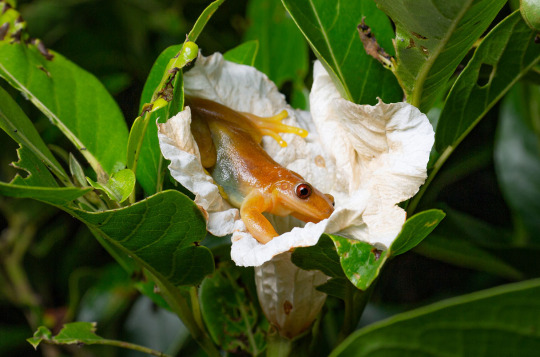
The creamy fruit and nectar-rich flowers of the milk fruit tree are irresistible to Xenohyla truncata, a tree frog native to Brazil. On warm nights, the dusky-colored frogs take to the trees en masse, jostling one another for a chance to nibble the fruit and slurp the nectar. In the process, the frogs become covered in sticky pollen grains—and might inadvertently pollinate the plants, too. It’s the first time a frog—or any amphibian—has been observed pollinating a plant, researchers reported last month in Food Webs.
Scientists long thought only insects and birds served as pollinators, but research has revealed that some reptiles and mammals are more than up to the task. Now, scientists must consider whether amphibians are also capable of getting the job done. It’s likely that the nectar-loving frogs, also known as Izecksohn’s Brazilian tree frogs, are transferring pollen as they move from flower to flower, the authors say. But more research is needed, they add, to confirm that frogs have joined the planet’s pantheon of pollinators.
Source.
7K notes
·
View notes
Text
Meet the seven new frog species we just named after iconic Star Trek captains!
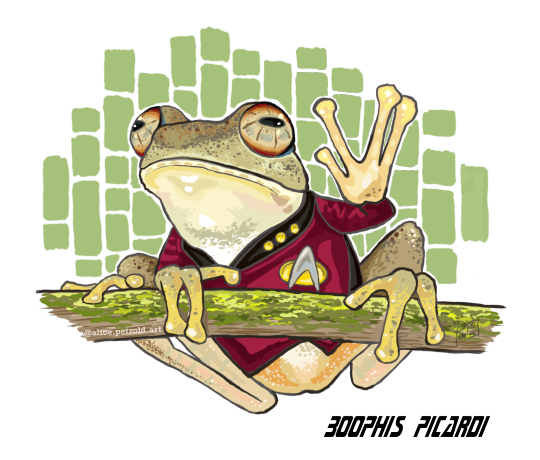
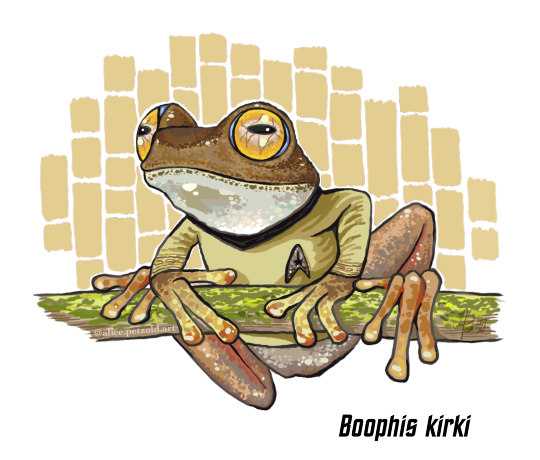
Artwork by A. Petzold, CC BY-ND 4.0
At the right time of year along rushing streams in the humid rainforests that stretch the length of Madagascar's eastern and northern mountain ridges, otherworldly trills of piercing whistles can be heard.
Are they birds? Insects? Communicator beeps? Tricorder noises?
No, they're little treefrogs!
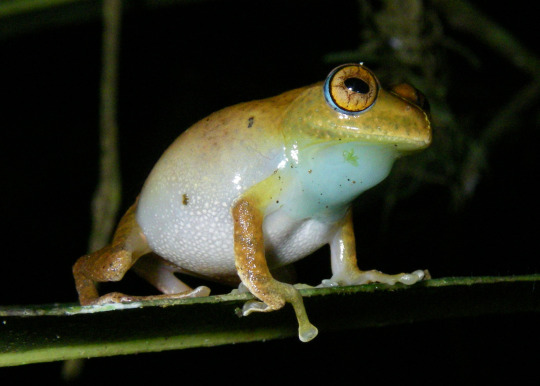
Boophis janewayae. Photo by M. Vences, CC BY-SA 4.0
Until recently, we thought all of the populations of these little brown frogs across the island were one widespread species, Boophis marojezensis, described in 1994. But genetics in the early 2000s and 2010s showed that there were several species here, not just one.
Now my colleagues and I have shown that they are in fact eight separate species, each with unique calls!
These whistling sounds reminded us so much of Star Trek sound effects that we decided to name the seven new species after Star Trek captains: Boophis kirki, B. picardi, B. janewayae, B. siskoi, B. pikei, B. archeri, and B. burnhamae.
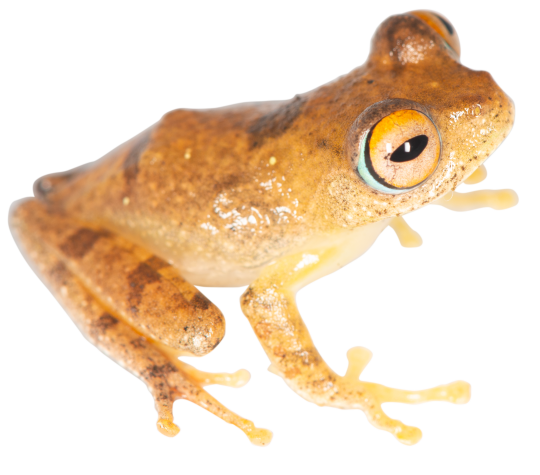



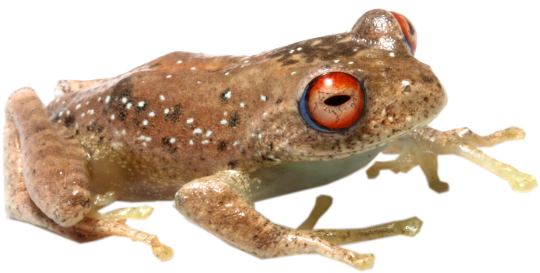
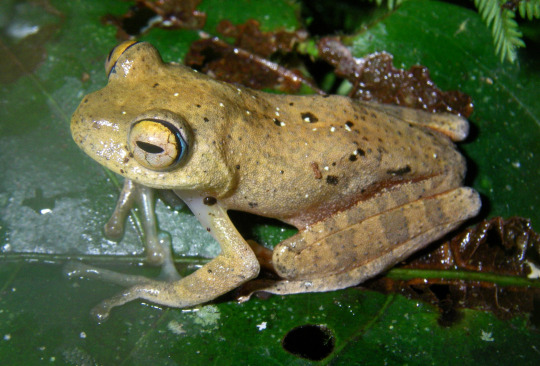

Photos of all new species described by Vences et al. 2024. CC BY-SA 4.0
I subtly and not-so-subtly built some Star Trek references into the paper, but probably the best one is this one:
'Finding these frogs sometimes requires considerable trekking; pursuing strange new calls, to seek out new frogs in new forests; boldly going where no herpetologist has gone before.'
— Vences et al. 2024
There’s a real sense of scientific discovery and exploration here, which we think is in the spirit of Star Trek.
Of course, it doesn't hurt that there are at least two Trekkies amongst the authors (including yours truly). As fans of Star Trek, we are also just pleased to dedicate these new species to the characters who have inspired and entertained us over the decades.
On a personal note, this marks a milestone for me, as it means I have now described over 100 frog species! I am very pleased that the 100th is Captain Janeway's Bright-eyed Frog, Boophis janewayae (if you count them in order of appearance in the paper)—she is probably my favourite captain, and I really love Star Trek: Voyager.
You can read more about the discovery of these new species on my website! You can also read the Open Access paper published in Vertebrate Zoology here.
#news#breaking news#Star Trek#new species#science#animals#WAKE UP BABE NEW FROGS JUST DROPPED#Boophis#Boophis janewayae#Boophis burnhamae#Boophis siskoi#Boophis pikei#Boophis archeri#Boophis kirki#Boophis picardi#in which nerds bring their nerdiness to work#Engage#WERE YOU WATCHING THIS SPACE?#THE FINAL FRONTIER?#DID YOU GET THE REFERENCE‽#Every time I have used that tag it has made me giddy with glee#you thought I was just goofin'#but I was FORESHADOWING#There's frogs in that nebula
8K notes
·
View notes
Text
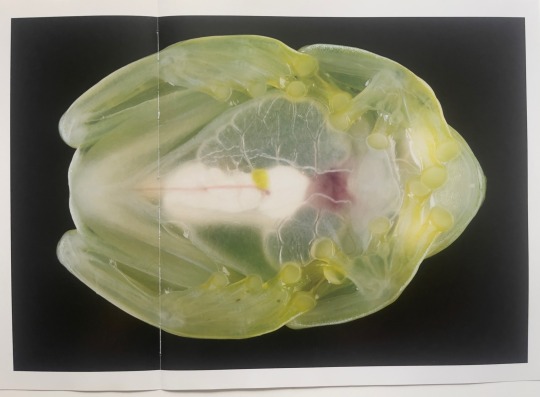
a glass frog's underside
24K notes
·
View notes
Text
i often think about that deep diving expedition where a toad was caught on camera at the bottom of loch ness

i wonder how he’s doing
44K notes
·
View notes
Text
I don’t know what’s better. The adorable and funny names for these frogs, the fact that the guy that named them, answered. On TUMBLR! Or that his last name literally translates to “joke” or “jest” in German.
OR that Dr. Scherz has a website, where you can read more about him and his research and buy adorable frog stickers!!!
here is the link: http://www.markscherz.com
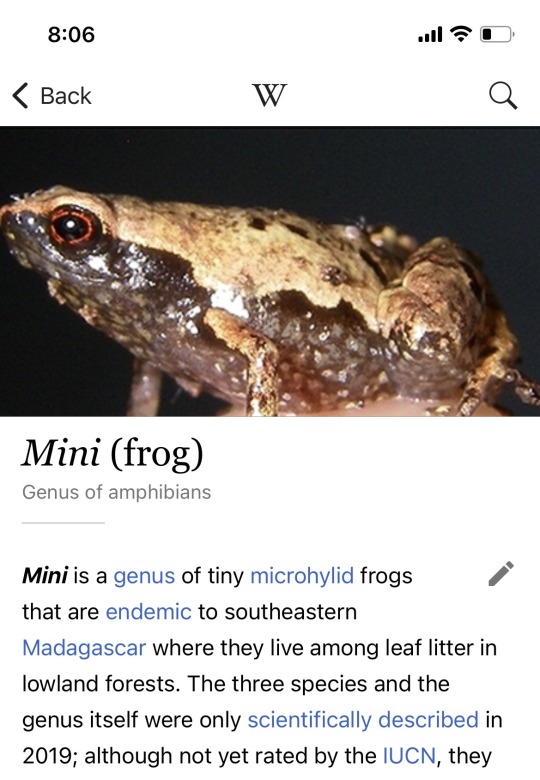
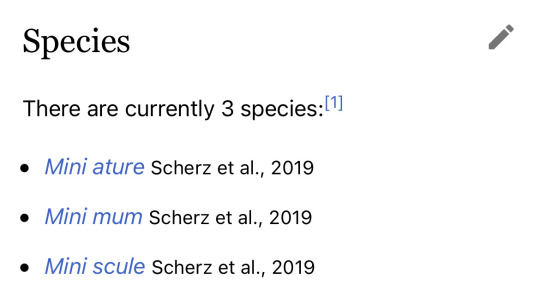
thank you scherz et al. for bringing us the frogs Mini ature, Mini mum and of course, the Mini scule
114K notes
·
View notes
Text
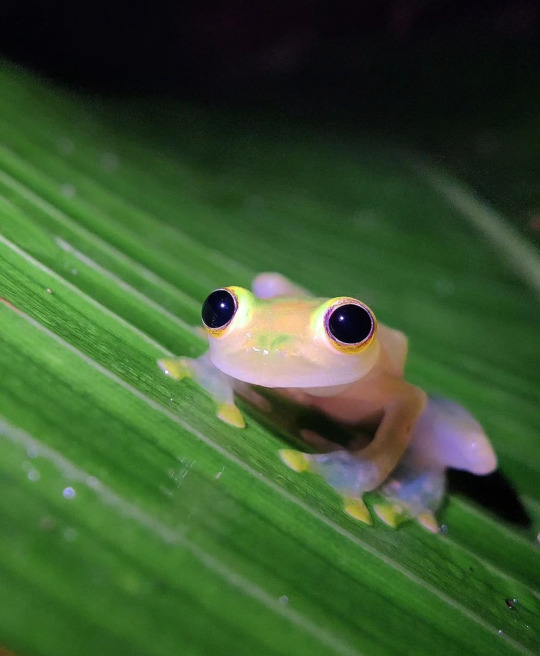
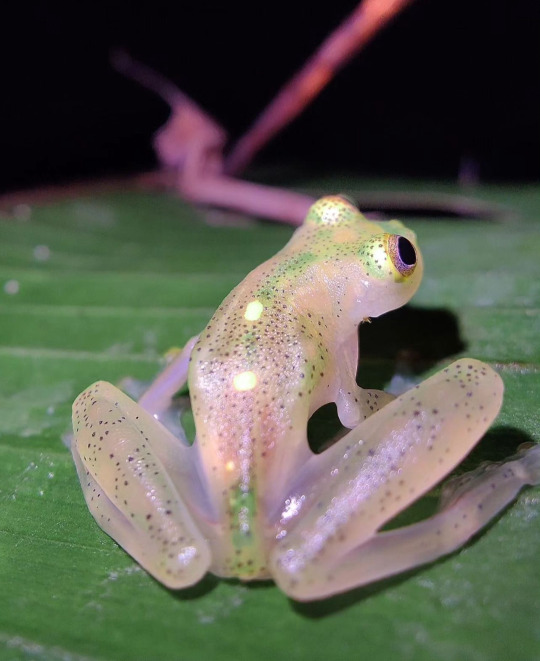
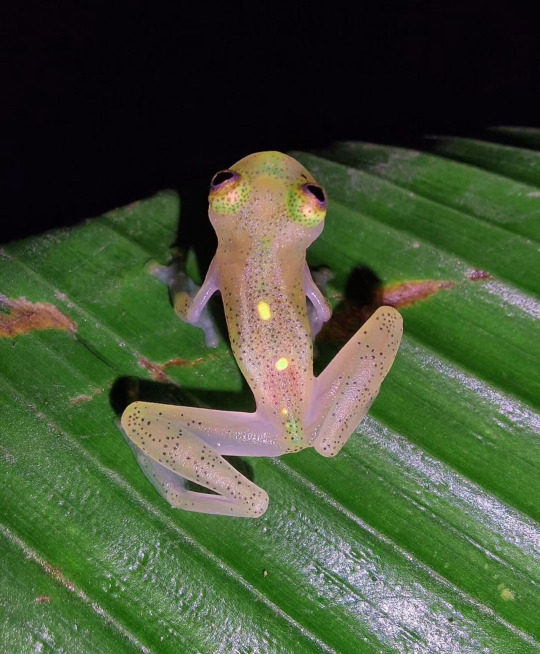
Atrato Glass Frog / Sun Glassfrog photographed by nuqui_herping
#Hyalinobatrachium aureoguttatum#glass frog#sun glassfrog#atrato glass frog#Centrolenidae#ecuador#frog#amphibian#science#nature#wildlife#photography
11K notes
·
View notes
Text
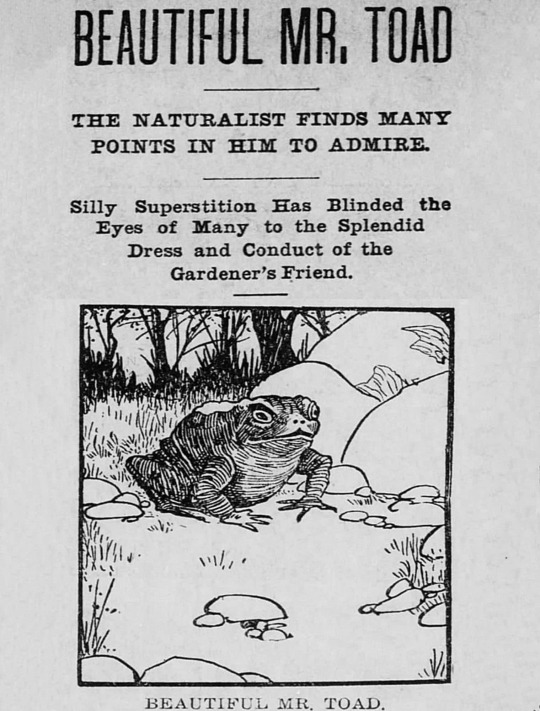
Vintage newspaper article
8K notes
·
View notes
Text
It's the home stretch for supporting Science Education
Oh hi. It's me again, the squid biologist on a mission to make it easier for people to connect with science. I run a small nonprofit called Skype a Scientist! We match scientists with classrooms, scout troops, robotics clubs, libraries, and more for virtual Q&As about science. We serve 4000-5000 classrooms every year! We offer this FOR FREE. We also run the tumblr-coded Squid Facts Hotline.
To support our program in 2025, we're selling FROG FACTS advent calendars. Every day you can scratch-off the sparkles to reveal facts about frogs! Please buy one! They're cute and fun and help me give science education away for free.

I unfortunately haven't gotten any grants to support our program for 2025, BUT!! these advent calendars are helping us keep the lights on! If you already bought one, THANK YOU! If you have shared a post about these calendars, that has been INCREDIBLY helpful. If you can't help us financially, reposting is so so helpful!
If you want to support our program, you can donate directly here. We're a 501.c.3 so if you live in the US, donations are tax deductible!
You can also read about our work in detail in our 2023 annual report here!
Thank you all for your support 💕🦑💕
2K notes
·
View notes
Text

[Image ID: The Destiel confession meme edited so that Dean answers 'Seven 'Star Trek' frog species have been found!' to Cas' 'I love you'. /End ID]
The species have been named after seven Star Trek captains for their "'Star Trek'-esque calls'. Their high-pitched whistling sounds are reminiscent of 'Star Trek' sound effects like the Tricorder noises.
source link
Please welcome Boophis kirki, Boophis picardi, Boophis siskoi, Boophis janewayae, Boophis archeri, Boophis pikei, and Boophis burnhamae! Good to know scientists are just as nerdy as we all are.
1K notes
·
View notes
Text

Big day for nerds and frog enjoyers, get a load of this new chunk: Hyloscirtus tolkieni
(Article has a few more photos)
#it's so cute I love it so much#frog blogging#science fun#tolkien#lord of the rings#lotr#biology#amphibian#image description in alt text
20K notes
·
View notes
Text

Spallanzi taught frogs about non-procreative sex. These frogs are burning in Hell, and it is the fault of Lazzaro Spallanzani.
1K notes
·
View notes
Text

What in the world? The purple frog (Nasikabatrachus sahyadrensis), also known as the pig-nosed frog, might be spotted along India’s Western Ghats mountains. This unusual looking amphibian spends most of its time burrowed underground, typically near a stream or a pond. It uses its sensitive snout to sniff out snacks, like termites, and then scoops them out with its fluted tongue!
Photo: P. S. Sivaprasad, CC BY-NC 4.0, iNaturalist
#science#nature#natural history#animals#fact of the day#did you know#herpetology#frogs#animal facts#western ghats#purple frog#pig-nosed frog
621 notes
·
View notes
Text
Scientists have discovered the oldest-known fossil of a giant tadpole that wriggled around over 160 million years ago, among the dinosaurs of the Jurassic Period. The new fossil, found in Argentina, surpasses the previous ancient record holder by about 20 million years. Imprinted in a slab of sandstone are parts of the tadpole's skull and backbone, along with impressions of its eyes and nerves. "It's not only the oldest tadpole known, but also the most exquisitely preserved," said study author Mariana Chuliver, a biologist at Maimonides University in Buenos Aires.
Continue Reading.
737 notes
·
View notes
Text
At long last, the selfie I have been dreaming of: me with Mini mum!

#frogs#animals#science#herpetology#cute#Mini#Mini mum#my face#that thing on the front of my skull#gpoyt#selfie
3K notes
·
View notes
Note
I got a pet pac-man frog recently and for the life of me I cannot come up with a good name for them, so I'm gonna roll the BLAST dice and see what comes up from this :D
Their too young to sex for now, and they're a coffee morph (Which means their much more brown and less green than normal), and I love them dearly already

They're still pretty small, so they're in a small little plastic container for now until they grow big enough to be in the 20 gallon-long tank I have
String identified: gt a t ac-a g ct a t cat c t a g a t, ' ga t AT c a at c t : T t g t , a t' a c (c a t c a g ta a), a t a aa T' t tt a, t' a a tt atc cta t t g g g t t ga-g ta a
Closest match: Pterostichus madidus genome assembly, chromosome: 8 Common name: Black Clock Beetle

(image source)
#tumblr genetics#genetics#biology#science#asks#requests#sent to me#frogs#bugs#insects#beetles#black clock beetle#<- i did not read that correctly the first time. hm.#from the species name; maddie is a suggestion.
779 notes
·
View notes